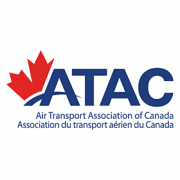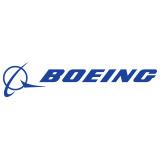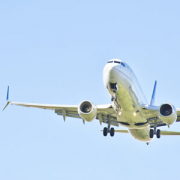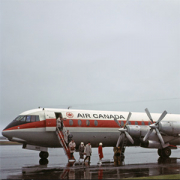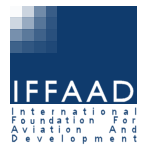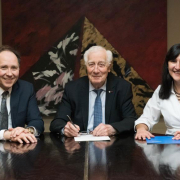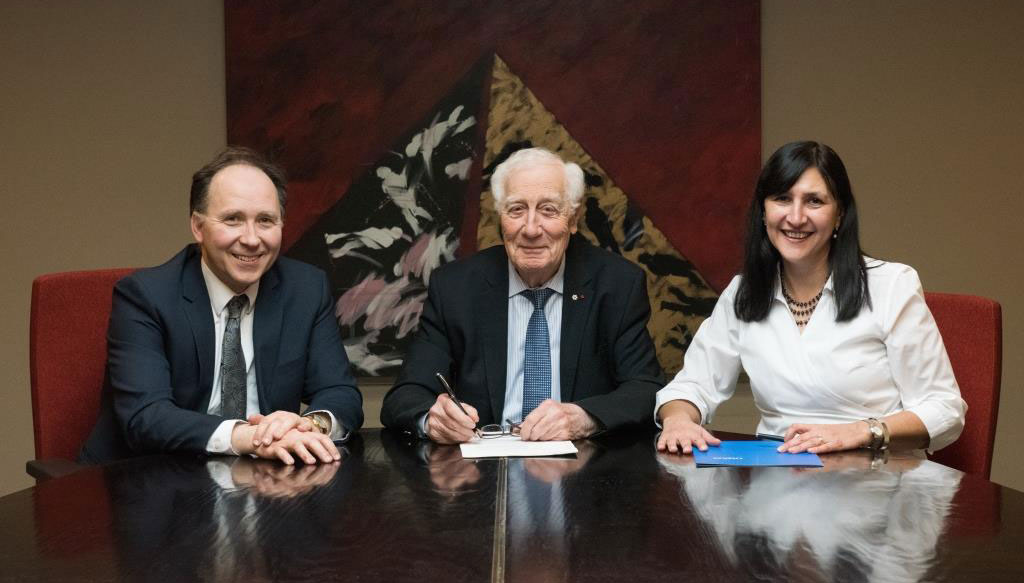
LECTURE BY PIERRE JEANNIOT TO McGILL INTERNATIONAL BUSINESS CLASS
Montreal, 3 April 2018
Change affects every walk of life … every business … every profession.
Looking back at history … we can observe that “change” is relentless … but the pace is not linear.
The invention of “agriculture” gave mankind more time to be creative; … more time to think …
There have been periods of great change … for example the Renaissance … the industrial revolution … and now the technological age!
*****
In terms of its impact on our civilization … the invention of the “internet” is perhaps … comparable to the invention of the “printing press” … in 1440.
It had a major impact … on the dissemination of knowledge …
Created new products … book production flourished … and newspapers were born!
Likewise … the internet … has given rise to tremendous innovations … including … of course … “social media”.
“Social media” deals with the ideas economy. It deals with intellectual property … and collects rent rather then selling goods!
*****
Sometimes … change occurs too fast … questioning our ability to adapt … or to feel comfortable with its consequences.
*****
Change affects every walk of life … every business … every profession.
We have been … and continue to be … in an era of constant innovation …
Some current examples
- The internet of things
- The expansion of robotics
- Drones for package delivery
- Self-driving … autonomous ground transportation
- The printing of parts … or 3D printing … or “additive printing”!
- Not to mention … artificial intelligence.
*****
Innovation can destroy existing companies … and it can create new ones … (creative destruction).
Walmart … and Apple … did not exist 50 years ago.
- Today they are listed in the top 10 of Fortune Magazine.
The pressure is on to continue to innovate … or perish.
- Apple says … that it needs to refresh or re-invent its consumer products … every four years … or it will lose leadership. …
- Think of Blackberry! … At one time an industry leader … today barely surviving.
*****
We are witnessing the start of exciting new ventures … for example …
The commercialization of space …
- The beginning of “space tourism”
- The commercial launching of smaller satellites … at a much lower price than today
- Major developments in air transportation … using electricity as the prime … if not the only … source of energy.
- Regional electric airplanes … 50 passengers maximum? … a possibility within 10 years? … Maybe hybrids to start with
We are well down the road towards achieving
- Driverless/autonomous transportation …
- And the use of drones … first for carrying freight … and for urban transportation. … Experiments in the Emirates … and Singapore.
In short … new technologies have … and will continue to affect the way that we work … and what we do.
*****
The various factors of change can have an impact on the products available …
Change can challenge the relevance of certain firms and institutions … and threaten their very existence.
Such conditions … can be technological … such as the impact of IT … or market changes … or a change in products … such as the availability of electricity … which made other forms of lighting … obsolete
Consumers’ expectations and needs change … for example
- People are increasingly eating at restaurants.
*****
For any firm … whose existence is threatened … for one reason … or another …
It is essential to define what changes are required … to ensure that the firm responds to evolving needs … or environment … and continues to fulfill an appropriate role … to be in business … and to be relevant.
*****
We are now going to discuss a “real” case.
The following example deals with the transformation undertaken by a company
- To ensure that it met evolving market requirements
- And societal expectations.
More particularly … I will discuss briefly the nature of that change …
How it was managed … to ensure that the corporation was transformed …
And achieved the relevance required … to justify its continued survival.
Specifically … as we look ahead … we will review the changes that were required to ensure the survival of Air Canada … and how they were accomplished.
As it would be for all such cases … it is important to understand
- The strengths … and weaknesses … of the company
- The forces that are at play … threatening its survival
- The transformation which is required … to ensure that it will thrive in the next timeframe …
- And the kinds of programs required to achieve that objective.
If one is going to dramatically change the purpose … or the direction … the nature of the firm … or anything else … it is also important
- To know where you come from! … and what you are starting from … and what was the original culture.
*****
The predecessor of Air Canada … Trans Canada Airlines … T.C.A. … was created in 1937 by C.D. Howe … nicknamed “Minister of Everything”
(P.M. MacKenzie King and Louis St. Laurent)
- It was a time of nation building
- Mandate: … To help unite the country: Atlantic to Pacific … coast to coast … similar to railroad.
- Shortened the time to cross the country … at the time 5-6 days.
It needed to pioneer radio navigation across the country.
Offer Canadians the best service … at the most affordable cost … i.e. provide them service with a break-even mandate.
Public service mentality
The advice of a Transport Minister was
“If you are profitable … lower the price …
But stay away from deficit … and we will stay away from your business.”
*****
Renamed Air Canada in the 60’s … to reflect an international role.
- Linking Canada to Europe and the U.S.A. … as well as the Caribbean … for example
- U.K. … France … Germany
- New York … Chicago … etc.
*****
Crown Corporation – Constraints
Sometimes … the Government mandated service to small cities … e.g. Sault Sainte Marie and Corner Brooks (by Minister of Transport)
Or promoting Canadian goods … e.g. wine
A Crown Corporation was required to appear every year at various Parliamentary Committees … for instance
Employment equity … languages … Transport Committee
Anecdote for Parliamentary Committee … concerning the Minister of Agriculture … attending Transport Committee … Eugene Whelan (Niagra)
- Requiring more Canadian wines during the hearing
- Adjourned to Parliamentary Restaurant
- No Canadian wines available at the restaurant
- Reconvenes afternoon sessions … no more questions on wines!
*****
Backtracking for a moment … we should recall …
That in the 1970’s … major changes were taking place.
Technology was changing productivity (jetliners and jet engines
- Boeing 747 … 350 passengers
- An increase of more than 4-fold
Increasing consumer pressure in North America.
Then In 1979 … the U.S. government decided to introduce the Domestic Airline Deregulation Act … under the Carter Administration.
*****
We saw the emergence of low costs
- New York Air … Peoples’ Express (new airlines)
Some traditional airlines could not cope! … Consolidation
- Eastern Airlines … Continental
Other low costs
- Laker’s Sky Train … Wardair … originally a charter … then a regular airline.
Interestingly … “Southwest Airlines” is the only one of the original “low costs” surviving today … most new low costs did not survive.
In Canada … we witnessed the emergence of Affinity Charters …
A form of low cost operation …
- Shortly after … the requirement for Affinity was dropped.
Given the proximity of the U.S. … Canada felt the need for progressive deregulation.
1984 “Freedom to Move” – The Canadian Deregulation Act
- Any airline can fly anywhere in Canada
- Freedom of frequency and pricing
The relevance of Air Canada was challenged.
For Air Canada … it was change … or perish!
We decided to develop a privatization plan.
*****
Privatization Plan:
- New mandate
- Creating a new vision
- Defining change elements
- Managing the transformation
Convincing ourselves of the necessity.
- Freedom to move … meant increased competition
- As a crown corporation … Air Canada was unable to move quickly (government controlled) … constraints
Alternative was potential demise
Believe that you can change and that it is feasible.
Developing a new vision … shared by all
We needed to convince everyone of the need for
- A national … commercial … international airline
- Profitable
- Customer-oriented
There was a lot of resistance to change!
We needed to obtain support of:
- Government
- Employees
- Communities
- Opinion makers
*****
We needed to define a change program
Major elements
- Improved productivity … efficiency
- Routes network … optimum fleet
- Change culture … customer orientation
- Community expectations
- Financial community … achieve profitability
Setting goals for each change element … for example … improved profitability
- Renegotiate contracts – with no government involvement
- Outsource when appropriate
- Create a cost/effective network
- Develop a new fleet plan
*****
Reviewing the network and the current fleet
- Review service required at small stations.
- Requirement for different fleet
- Correct infrastructure/overhead excessive
Solution was to have 12 small stations … served by different aircraft … and less heavy infrastructure.
- Create regional airlines e.g. Air Ontario, Air B.C. etc,
- Operate small aircraft – DH-8 100/200
- More frequent services
But communities losing jet service (DC-9) in return for several flights a day by DH-8 turbo props … had to be convinced.
Air Canada needed to avoid a majority interest … for labor reasons.
*****
To accomplish … extensive communications had to be carried out with …
- Communities … loss of jet vs turboprop
- Local and Federal representatives
- Unions and employees … loss of civil status
- Local consumers … service vs profit?
*****
Improving the productivity of the employees
- Convincing the pilots to support change … without work interruption
- Improving the productivity of
- In-flight/cabin groups (5-week work interruption)
- Mechanics group (IAM) (3-week interruption)
- Counter/reservations people (2-week interruption)
All of which allowed changes in work rules and in some cases … outsourcing.
[Anecdote about walking in to a union meeting in Toronto … discussing strike action.]
*****
Developing a new … and more ambitious … international route plan.
- Untapped potential – 5th Freedom from U.K.
- Fully exploiting existing rights to the U.S. … and to overseas destinations (Asia).
*****
Communications program.
Carried out an extensive communications program … to reach each individual employee.
- Joining coffee breaks at various locations in a relaxed “townhall” format
- Answering questions
- Talking about the future
- Enlisting their support
- Proposing employee partial ownership
Carrying out extensive communication program with the provincial … municipal … various opinion makers … across the country.
- Explaining the service proposed
- The need for a major international airline
- The social and economic advantages
*****
Set up an overall cultural change program
- Involving each employee
- Emphasizing team building
- Customer-oriented
- Pride of ownership
*****
Improve the debt/equity ratio by … (find hidden values)
- Monetizing hidden values in the current fleet
- Sale and lease back of the DC-9 fleet
- Sale of the Boeing 737 fleet to FedEx … obtain contract to convert to freighter
- Sell part of investment in Guinness Peat leasing
which generated more than $150 million.
[Anecdote: Bank of Nova Scotia deciding to sell its headquarters for $400 million Canadian [they are not in the brick business].
*****
- Develop a new fleet plan
- To acquire/order long range aircraft to support the international expansion program … B767-200/300
- To replace the domestic fleet A-320/A-321 options
- To provide new aircraft for the regional operation – 50 DH-8 100 & 200
*****
By 1987-1988 … we achieved
- Improved productivity
- Improved profitability – adequate R.O.I.
- Better debt/equity ratio
- New regional services (airline and fleet)
- New proposed Air Canada Act
- Government-free contracts for suppliers
*****
Proposed partial privatization to the Federal Government … as a first step …
- Enabled Air Canada to sell $300 million of new equity for 49% of the airline
- Shares sold for $8.00 each
The Government was able to sell its participation in the airline in 1989 for 500 million CAD
- 51% of its shares … at $12 CAD a share
*****
Air Canada was then free to operate as a private enterprise with some constraints:
- Headquarters to remain in Montreal
- Continue to have technical centres in Montreal, Winnipeg and Toronto
- Foreign ownership of shares limited at 25%
The financial community was comfortable with Air Canada.
- Efficient regional services created (JAZZ)
- International expansion strategy
- Optimising aircraft fleet
- Positive change in product – more market-oriented
- Improved debt/equity ratio
- Supported by reasonable/acceptable profit plan
*****
To summarize … and recap …
- Freedom to Move … issued in 1984
- Program started … Transform airlines to make it “privatizable” e.g. debt/equity ratio …
- Increase profitability
Partial privatization (1987-1988)
- Dilution of government ownership to 51% … $300 million raised. … First shares sold at 8 CAD a share
- New “Air Canada” Act
- Arms length agreement
- Limit on foreign ownership … less than 25%
Total privatization … 1988-1989
- Sale of government 51% share ownership … raised $500 million. … Shares had increased to 12 CAD a share!
- New fleet acquired
- Executive management re-appointed for 2 years
*****
Lessons:
Need to make a sober assessment of my/our situation
- Carrying out a “swot” analysis
- Strengths … weaknesses … opportunities … threats … challenges
Develop strategy
What are the possible scenarios for tomorrow?
- Seeing “around the corner” … How is the industry evolving?
Review where we came from
- Evolution of current culture and expectations
Understand that the keys for success yesterday … are often not the keys to success tomorrow.
Set up and manage a change implementation program with
- Program managers
- Milestones and periodic reviews
Follow up … and celebrate … success
In a changing world … embrace change – and prosper!
Thanks … and good luck!
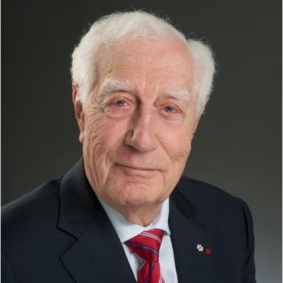 C’est dans un Québec en pleine transformation que Pierre J Jeanniot a joué l’un des rôles les plus importants de sa carrière. Arrivé à Montréal en 1947 avec sa mère dans l’espoir d’y vivre une vie meilleure que dans sa France d’origine, le jeune Pierre Jeanniot s’illustre à l’école par un talent indéniable et une certaine envie de rébellion. « J’ai été fichu à la porte trois fois! se rappelle-t-il. En dernière année, j’ai été privé de cours pendant les dernières semaines, mais j’ai quand même fini deuxième sur l’île de Montréal. »
C’est dans un Québec en pleine transformation que Pierre J Jeanniot a joué l’un des rôles les plus importants de sa carrière. Arrivé à Montréal en 1947 avec sa mère dans l’espoir d’y vivre une vie meilleure que dans sa France d’origine, le jeune Pierre Jeanniot s’illustre à l’école par un talent indéniable et une certaine envie de rébellion. « J’ai été fichu à la porte trois fois! se rappelle-t-il. En dernière année, j’ai été privé de cours pendant les dernières semaines, mais j’ai quand même fini deuxième sur l’île de Montréal. »

